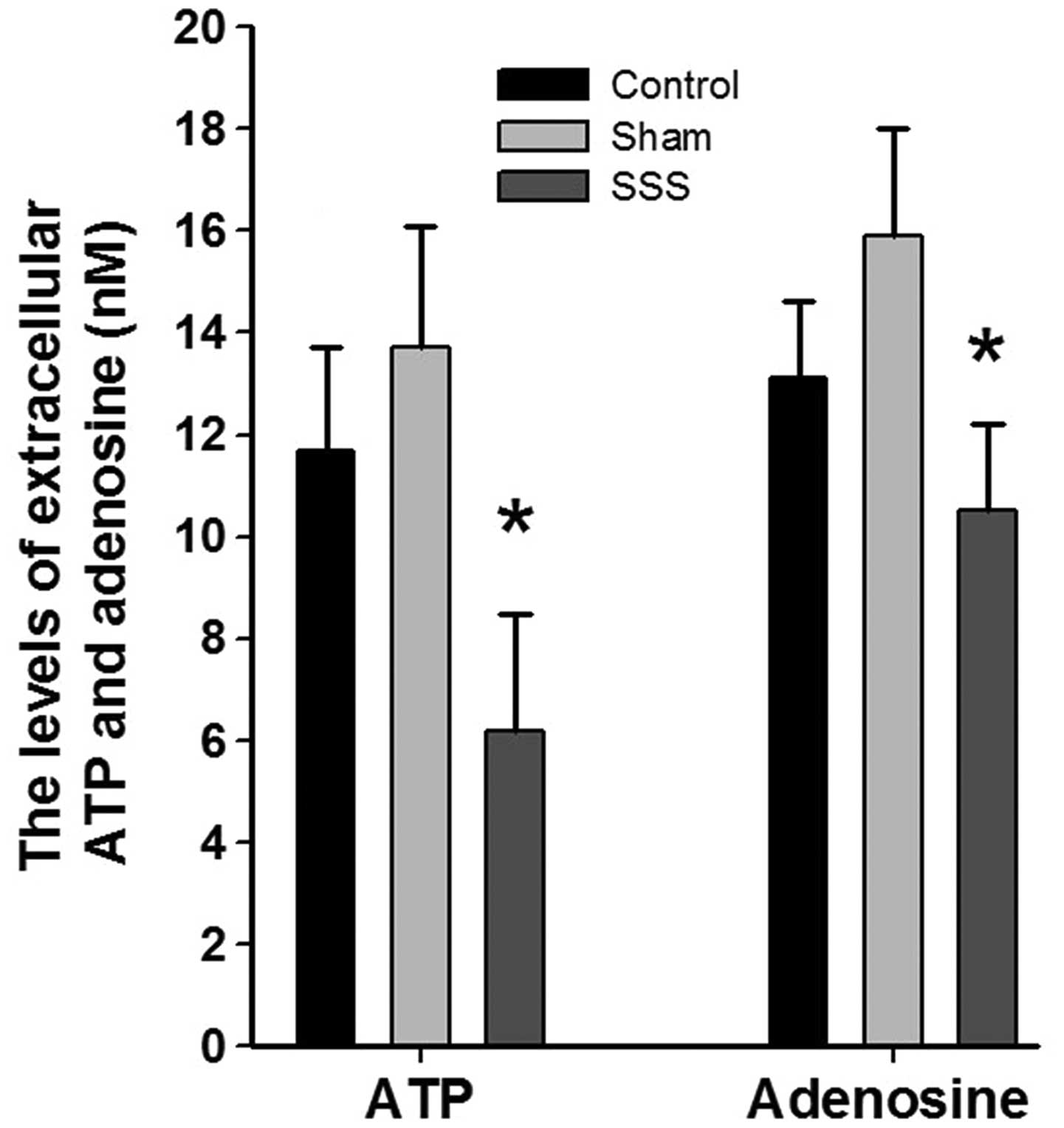Subclavian steal syndrome decreases neurogenesis in the cerebellar cortex and affects cognitive function in rabbits
- Authors:
- Published online on: August 5, 2015 https://doi.org/10.3892/etm.2015.2670
- Pages: 1455-1459
Metrics:
Total
Views: 0 (Spandidos Publications: | PMC Statistics:
)
Total PDF Downloads: 0 (Spandidos Publications: | PMC Statistics:
)
Abstract
Subclavian steal syndrome (SSS) is a condition characterized by a steno‑occlusive impairment of the proximal subclavian artery. The majority of patients with SSS are asymptomatic, while symptomatic patients present with neurological symptoms. SSS is a risk factor for cerebral ischemia, which reacts badly upon cognitive function; however, it remains unknown whether SSS is able to cause progressive cognitive impairment. In the present study, the potential effects of SSS on cognitive function were investigated using atherosclerotic rabbits as a model of SSS. A total of 48 male New Zealand rabbits were divided into the control, sham and SSS groups. The results of eyeblink experiments indicated no significant differences among the three groups; however, SSS did appear to exert a negative impact on neurogenesis in the cerebellar cortex. In order to further clarify the mechanisms underlying this SSS‑mediated reduction in cell proliferation, the energy metabolism, immune function and oxidative stress statuses were evaluated by determining the levels of adenosine triphosphate (ATP), adenosine, interleukin (IL)‑1β, IL‑6, malondialdehyde, 8‑hydroxy‑2'‑deoxyguanosine, CuZn‑superoxide dismutase and catalase. The results showed that the levels of extracellular ATP in the cerebellar cortex had decreased, while levels of adenosine had also decreased. These findings suggest that SSS is able to inhibit neurogenesis in the cerebellar cortex by decreasing the extracellular ATP levels. Furthermore, these changes may result in an impairment of the cognition of the rabbits. The early diagnosis and treatment of SSS may, therefore, prevent or mitigate cognitive impairment in the future.













